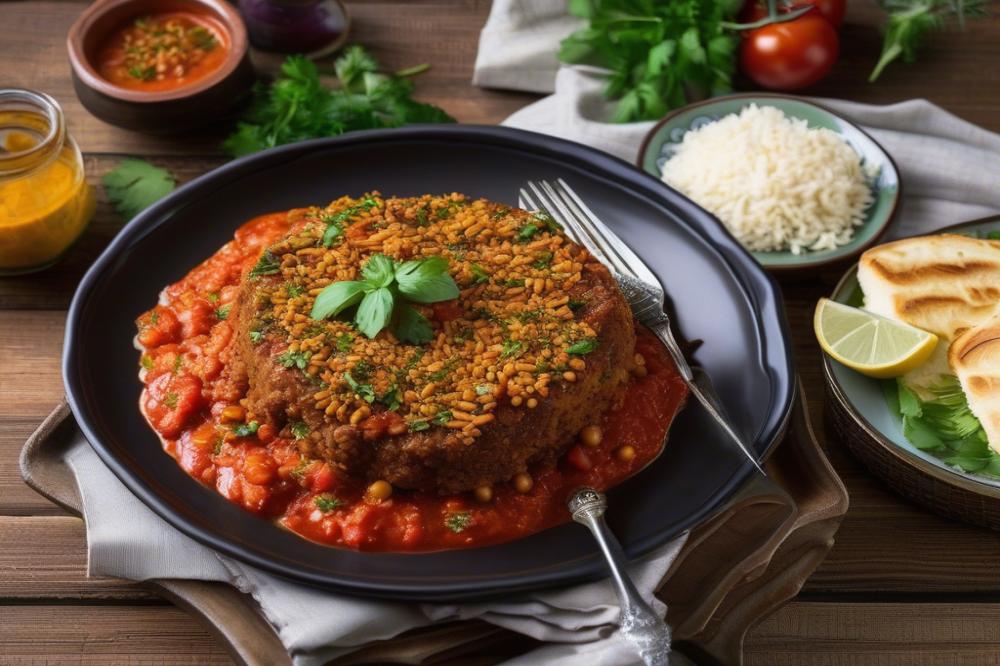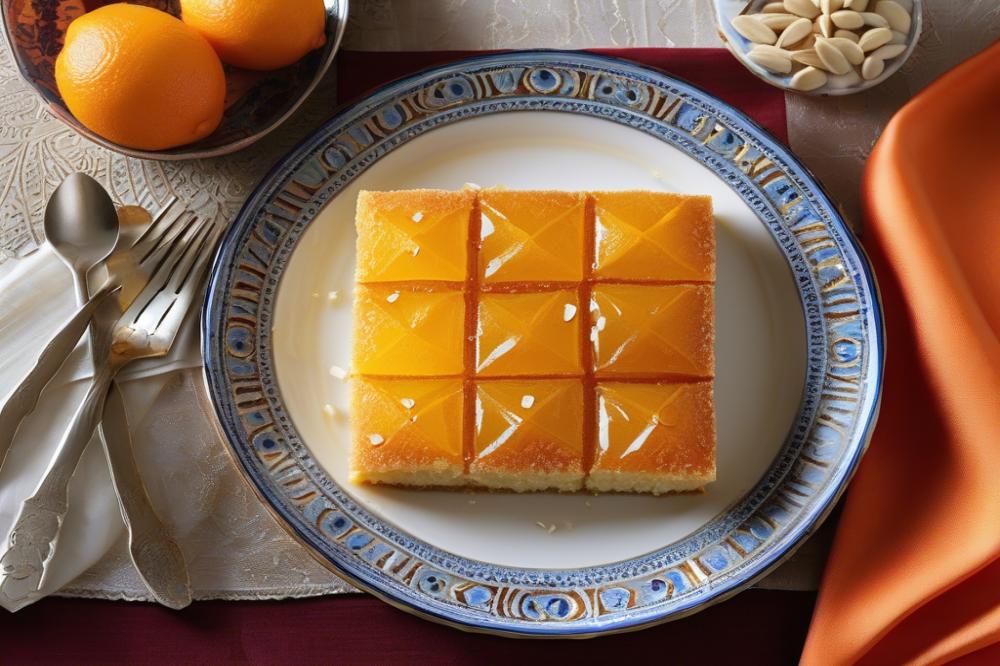Introduction to Moroccan Pastilla
Moroccan Pastilla holds a special place in the heart of Morocco. This dish is not only a famous pastry but also a symbol of the country’s rich culinary heritage. Traditionally, it is a meat pie, often filled with spiced pigeon, that showcases an exquisite balance of flavors. Its flaky crust adds to the texture, inviting you to take a bite.
In Moroccan cuisine, spices play a vital role, contributing to the warmth and depth of each mouthful. A mix of cinnamon, herbs, and sometimes nuts creates a complex taste. Among the ingredients, almonds lend a delightful crunch, making each slice a celebration of taste and tradition.
This dish is often presented during special occasions and festive gatherings. Many families serve it during weddings, holidays, and significant celebrations. Beyond being a main course, it can also be a traditional dessert, reinforcing its versatility. The combination of sweet and savory elements makes it a unique experience for all who try it.
Moroccan Pastilla reflects not just the flavors of the region, but also the culture and love of sharing that defines Moroccan hospitality. For anyone exploring this vibrant cuisine, this dish is a must-try.
Understanding Moroccan Pastilla

The history of Moroccan Pastilla is rich and fascinating. This delightful dish originated in Morocco, where it evolved from centuries of culinary traditions. Initially, it was made as a meat pie, often filled with pigeon, which was a popular choice among the nobility. Over time, the use of pigeon has decreased, and many now commonly use chicken or turkey. However, the essence of the dish remains the same.
Traditionally, Pastilla served not only as a savory meal but also as a festive treat. Families often prepare it for special occasions or celebrations. The contrast of flavors—sweet and savory—makes it stand out, turning it into something special. In Moroccan cuisine, the presence of spices plays a vital role. The unique blend of spices brings life to the dish, enhancing every bite.
Almonds, cinnamon, and sugar mix with the spices to create a perfect balance. The flaky crust acts as a vessel, holding all the delicious ingredients together. This pastry envelopes the rich filling, providing a delightful texture in every mouthful. When it comes to pastilla, the spices used go beyond mere flavor; they tell a story of Moroccan culinary culture.
The use of specific spices reflects the region’s history and trade routes. Cinnamon, a key ingredient, adds warmth and sweetness. This spice works harmoniously with the savory elements, creating a flavor profile that tantalizes the taste buds. Furthermore, many recipes adapt over time, showcasing how one dish can take on different forms.
Serious food lovers appreciate Moroccan Pastilla not just for its taste, but for its symbolism within Moroccan culture. It represents hospitality and celebration, and it often appears at weddings, holidays, and feasts. People gather around a well-prepared Pastilla, sharing the experience as they savor this delicious meat pie.
Ingredients and Cooking Instructions

Ingredients List and Quantities
To create this delightful meat pie, gather the following ingredients:
- 1 whole pigeon (or 2 chicken breasts)
- 1 cup of sliced almonds
- 1 large onion, finely chopped
- 3 tablespoons of olive oil
- 1 teaspoon of ground cinnamon
- 1 teaspoon of turmeric
- 1 teaspoon of ground ginger
- 1/2 teaspoon of black pepper
- 1/4 teaspoon of saffron threads (optional)
- 2 cups of water
- 1/2 cup of fresh parsley, chopped
- 1/2 cup of powdered sugar
- 1 package of filo pastry (about 10 sheets)
- 1 egg, beaten (for egg wash)
Cooking Instructions
Follow these steps carefully to prepare a traditional dessert like this:
- Start by placing the pigeon in a pot. Add water, chopped onions, olives, and spices. Bring the mixture to a boil.
- Reduce heat and simmer for about 45 minutes. The meat should be tender and easy to shred.
- Once cooked, remove the pigeon and let it cool. Save the broth for later.
- Shred the meat into small pieces, discarding bones. Mix the meat with chopped parsley and cinnamon.
- In a skillet, toast the sliced almonds over medium heat until lightly golden. Stir them into the meat mixture.
- Take the filo pastry and lay it out flat. Brush each sheet lightly with olive oil.
- Layer 5 sheets of pastry in a round baking dish, allowing the edges to hang over.
- Fill the center with the meat mixture, then fold the edges of the pastry over the filling.
- Cover with additional filo sheets. Score the top gently to create a pattern.
- Brush the top layer with the beaten egg to create a shiny finish.
- Preheat the oven to 375°F (190°C). Bake for 25-30 minutes, or until the crust is golden brown.
- While baking, mix powdered sugar with a pinch of cinnamon.
- Once out of the oven, let it cool slightly. Dust the top with the sugar mixture before serving.
Nutritional Information
Understanding the nutrients in each ingredient can help you appreciate this dish better.
- Pigeon (or chicken): Approximately 250 calories per serving, with around 30g of protein. Rich in B vitamins and minerals.
- Almonds: About 160 calories per ounce, with 6g of protein. Packed with Vitamin E, magnesium, and healthy fats.
- Onions: Roughly 40 calories per medium onion. Contains Vitamin C, B vitamins, and antioxidants.
- Olive oil: 120 calories per tablespoon. A good source of monounsaturated fats and vitamin E.
- Spices (cinnamon, turmeric, ginger): Low in calories, but high in antioxidants and anti-inflammatory properties.
- Filo pastry: About 90 calories per sheet. Low in fat but contains refined carbohydrates.
- Powdered sugar: About 30 calories per tablespoon, providing quick energy without nutrients.
This unique blend of ingredients reflects the rich flavors of Moroccan cuisine while also offering various health benefits. Enjoy this sweet and savory dish in moderation for a delightful experience.
Techniques for Perfection

Creating the perfect flaky crust is an art in itself. The pastry must be thin and delicate. Start with high-quality ingredients. Use cold butter or alternative fat for best results. Cut the fat into the flour until it resembles coarse crumbs. This step is essential for achieving a crispy texture. Some prefer to add a pinch of salt for flavor. Next, gradually mix in water until the dough comes together. Do not overwork it; this could lead to toughness.
Once the dough is ready, refrigerate it for at least 30 minutes. Chilling allows the fat to solidify. This results in a lighter, airier crust after baking. When rolling out the pastry, use plenty of flour to prevent sticking. Aim for thin layers, as they will puff up beautifully in the oven.
Layering spices correctly can dramatically impact flavor. Moroccan cuisine often highlights warm spices like cinnamon, saffron, and cumin. When preparing the filling, add spices gradually. Cook your meat, which can be pigeon or chicken, with onions and garlic. Incorporate almonds and raisins for added texture and sweetness. Pay attention to balance; flavors should complement rather than overpower each other. Experiment with spice quantities to find the perfect mix.
Assembling the Pastilla is a process that requires patience. Begin by layering the pastry in your baking dish, allowing some excess to hang over the edges. Spoon in the filling evenly. Then fold the excess pastry over the top. Brush with melted butter to promote browning. It’s common to add another layer of pastry for extra crunch.
Baking is where magic happens. Preheat your oven; a hot oven helps achieve that golden brown finish. Bake until the crust is crispy and flaky, usually around 30 to 40 minutes. If the top begins to darken too quickly, covering it loosely with foil will help maintain color without burning. Once finished, let the Pastilla rest before serving. This resting period helps the flavors meld and the texture settle nicely.
Garnish with powdered sugar and cinnamon for a beautiful presentation. This traditional dessert is not just visually appealing, but the taste will captivate anyone who tries it. Each bite offers a delightful blend of savory and sweet, showcasing the best of what Moroccan cuisine has to offer.
Serving and Pairing Suggestions
When serving Moroccan Pastilla, presentation is key. A beautiful display can elevate the dining experience. A light dusting of powdered sugar combined with ground cinnamon on top creates an inviting look. This touch also highlights its sweet and savory contrast.
Consider serving it in a round shape, cut into wedges. This allows guests to easily pick up their portions. Placing fresh herbs, like cilantro or mint, around the dish adds a burst of color. Lemon wedges can provide a zesty touch that balances the spices in the meat pie.
As for sides, traditional salads such as a simple carrot or beet salad work well. These light dishes prepare the palate for the rich pastry. Couscous can also be a nice addition, serving as a fluffy base that soaks up any juices. Pairing with olives can enhance the Moroccan experience. Their briny flavor complements the sweetness of the pastilla.
In terms of beverages, Moroccan mint tea is a classic choice. This fragrant drink offers refreshment and the comforting sweetness needed after a meal. Alternatively, a light white wine also pairs nicely, providing a crisp flavor profile that contrasts the flaky crust of the pastry.
For those who enjoy a bit of heat, serving a spicy harissa sauce on the side can enhance the dish further. The chili sauce brings a new layer of flavor. It can be an exciting surprise for adventurous eaters.
Finally, finish the meal with a traditional dessert. While pastilla can often be a dessert in itself, a small serving of almond cookies or baklava keeps with the theme of Moroccan cuisine. Their crunch and sweetness echo the experience of the main dish and end the meal on a tasty note.
Final Thoughts on Moroccan Pastilla
Moroccan Pastilla offers a delightful combination of sweet and savory flavors that highlights the culinary richness of Morocco. This delightful pastry stands out not only for its intriguing taste but also for its intricate preparation. It uses layers of thin dough filled with spiced meat, nuts, and a dusting of sugar and cinnamon, creating an experience that dances between contrasting flavors.
Preparing this dish at home is a wonderful way to connect with Moroccan culture. The process of making Pastilla can be as rewarding as tasting it. Each bite reveals a symphony of textures that surprises the palate. Crunchy layers intersect with juicy filling, and the hint of sweetness at the end adds an unexpected twist.
Sharing this dish with family and friends is a great way to introduce them to the diversity of Moroccan cuisine. The experience of creating this masterpiece from scratch can be both fun and educational. Many people miss out on the joy of cooking, but this lovely pastry invites even novice chefs to step into the kitchen and explore.
Ultimately, trying your hand at making Pastilla allows you to truly appreciate its culinary artistry. The dish not only showcases the flavors of the ingredients but also tells a story of heritage and tradition. Dive into the world of Moroccan cooking and discover how a seemingly simple dish can bring so much joy and flavor to your table.



